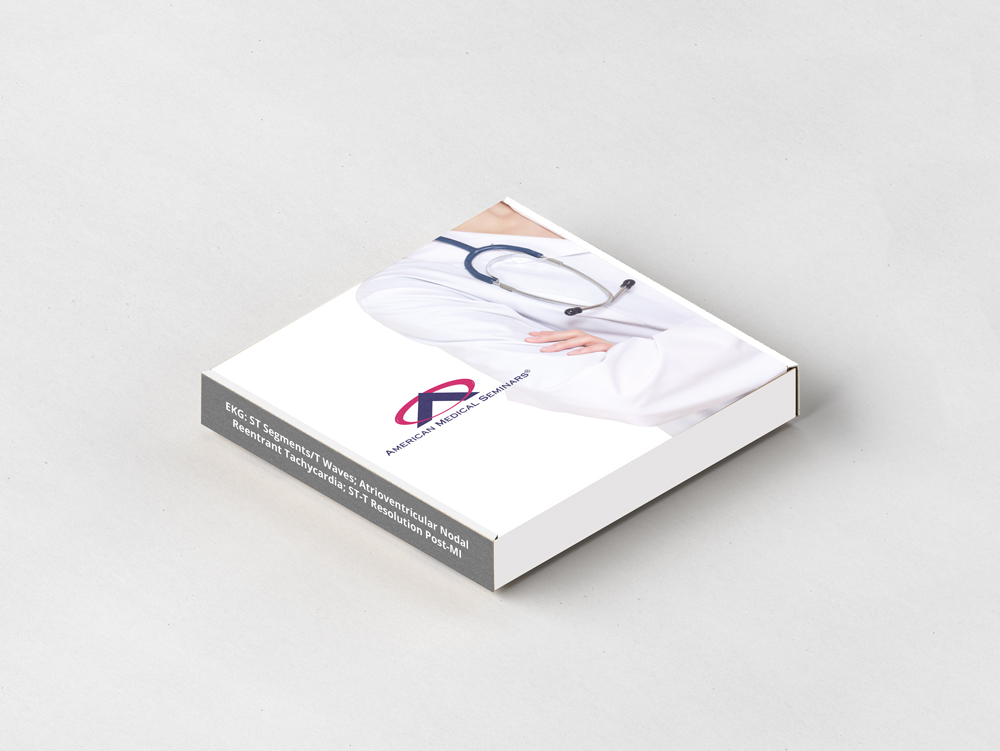Product Description
Title: Family Medicine – EKG: ST Segments/T Waves; Atrioventricular Nodal Reentrant Tachycardia; ST-T Resolution Post-MI.
Faculty: Jerry W. Jones, M.D., F.A.C.E.P., F.A.A.E.M
Original Release Date: July 1, 2019 Expiration Date: July 1, 2022
TOPIC 1: Normal/Abnormal P waves, PR intervals and QRS complexes.
Upon completion of this session, the participant should be able to: COMP
- Distinguish P waves originating outside the SA node.
- Differentiate PR intervals that indicate AV conduction from those that do not.
- Appraise the appropriateness of the QRS intervals in relation to the leads in which they appear
- Distinguish normal septal q waves from pathological Q waves.
TOPIC 2: AVNRT: Atrioventricular Nodal Reentrant Tachycardia.
Upon completion of this session, the participant should be able to: COMP
- Relate the typical P wave changes in AVNRT relative to the QRS complex
- Relate the mechanism of AVNRT and how that knowledge is used to terminate the dysrhythmia
- Distinguish AVNRT from a rapid atrial flutter with 2:1 conduction
TOPIC 3: Reciprocal changes: What are they and how do they help? | Timeline for ST – T Resolution Post-MI.
Upon completion of this session, the participant should be able to: COMP
- Differentiate between ST depression as an indication of subendocardial ischemia or as a reciprocal change
- Utilize serial 12-lead ECGs to detect subtle changes in the ST segment when the initial ECG is non-diagnostic
- Detect dysrhythmias characteristic and diagnostic of reperfusion
- Relate current ST deviation in relation to the elapsed time following reperfusion
- The receipt for any incentive-associated purchase will designate the value of the gift card separately from the cost of the learning activity.
- This incentive may have implications on your tax reporting obligations. Any reimbursed amount must be declared as personal income for tax purposes.


